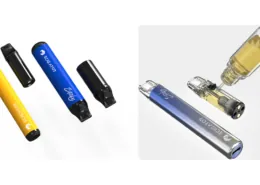9 Potential Vaping Side Effects and How to Manage Them
As vaping continues to gain popularity as a smokeless alternative to traditional cigarettes, it’s crucial for users to be well-informed about the potential side effects associated with this practice. While e-cigarettes are not classified as medical devices, they can still cause various side effects, which may vary depending on factors such as the type of device, e-liquid composition, and individual vaping habits.
In this comprehensive guide, we’ll delve into nine of the most commonly reported side effects of vaping, drawing from a combination of personal experiences, social media discussions, and search engine data. It’s important to note that medical studies and official surveys specifically addressing vaping side effects are limited, so the information presented here should be considered anecdotal and not a substitute for professional medical advice.
1. Dry Mouth
One of the most prevalent side effects of vaping is dry mouth, which is primarily associated with the base ingredients of e-liquid: propylene glycol (PG) and vegetable glycerin (VG). Despite their use as humectants in many consumable products, PG and VG are also hygroscopic, meaning they absorb water from their surroundings.
To alleviate dry mouth caused by vaping, users can:
- Use an oral hydration rinse like Biotene
- Increase water intake
- Consult with an oral health provider if the issue persists
| Ingredient | Humectant Properties | Hygroscopic Properties |
|---|---|---|
| Propylene Glycol (PG) | Helps keep products moist | Absorbs water from surroundings |
| Vegetable Glycerin (VG) | Helps keep products moist | Absorbs water from surroundings |
Also Read:
What is PG and VG
2. Dizziness or Headrush
Similar to the sensation experienced by first-time smokers, some vapers may feel lightheaded or dizzy when using e-cigarettes. This side effect is typically associated with nicotine consumption, particularly at high concentrations, and often subsides as the body becomes accustomed to the stimulant.
To minimize dizziness or headrush, vapers can:
- Lower their nicotine strength
- Reduce the frequency of vaping sessions
- Allow time for the body to adjust to nicotine

3. Fatigue and Tiredness
Nicotine, a stimulant found in most e-liquids, can paradoxically increase mental alertness while also having a sedative effect. Some vapers may experience fatigue or tiredness, similar to a caffeine crash, after vaping.
To combat feelings of fatigue, users can:
- Adjust their nicotine strength (either higher or lower)
- Experiment with different e-liquid compositions
- Consider eliminating nicotine altogether
4. Sore Throat
A sore or scratchy throat may be caused by various factors, including nicotine concentration, PG/VG ratio, flavorings, or even the type of coil used in the atomizer. Some vapers may discover an allergy to nickel, a common component in vape coils.
To alleviate a sore throat caused by vaping, users can:
- Opt for a higher VG percentage in their e-liquid
- Try a mentholated or soothing flavor
- Lower their nicotine concentration
- Switch to a coil made from Kanthal or stainless steel
If the sore throat persists, it’s advised to consult a physician.
5. Coughing
Coughing is a common complaint among beginner vapers, even those who are former or current smokers. This side effect is often the result of an incorrect approach to vaping and inhaling, such as using high nicotine with a direct-lung inhale or attempting a cigarette-style draw on a device with excessive airflow.
To minimize coughing while vaping, users should:
- Check the airflow of their device and match their inhalation style accordingly (mouth-to-lung or direct-lung)
- Use lower nicotine concentrations (6 mg/mL or less) for direct-lung vaping
| Inhalation Style | Airflow | Nicotine Concentration |
|---|---|---|
| Mouth-to-Lung (MTL) | Tight, like a coffee straw | Higher (12 mg/mL or more) |
| Direct-Lung (DL) | Loose, like a milkshake straw | Lower (6 mg/mL or less) |
6. Headaches
Headaches can occur when transitioning from smoking to vaping, as tobacco contains various alkaloids that work in concert with nicotine. The absence of these minor alkaloids in e-liquid may lead to withdrawal symptoms, such as headaches.
Additionally, dehydration is a common cause of headaches, and the use of PG and VG in e-liquids can contribute to this issue.
To address headaches related to vaping, users can:
- Allow time for the body to adjust to the absence of tobacco alkaloids
- Increase water intake to combat dehydration
- Consult a medical professional if headaches persist

7. Weight Loss/Gain
Nicotine is often considered an appetite suppressant, but its efficacy in promoting weight loss is not conclusively proven. While some vapers may experience weight loss due to the oral fixation provided by vaping without the added calories, others may gain weight if they replace vaping with calorie-dense alternatives.
To maintain a healthy weight while vaping, users can:
- Be mindful of their overall calorie intake
- Consider using nicotine pouches as an alternative to vaping or snacking
8. Nausea
Nausea is a common side effect of nicotine consumption, similar to the experience of using over-the-counter nicotine replacement therapies like gums and patches. If nausea persists and is not related to nicotine intake, it may be a reaction to a specific e-liquid or flavoring.
To alleviate nausea caused by vaping, users can:
- Reduce their nicotine concentration
- Experiment with different e-liquid flavors
- Decrease their overall vaping frequency
If nausea persists or causes significant distress, it’s best to seek medical advice.
9. Chest Pain
Chest pain from vaping can be caused by various factors, including excessive heat, high nicotine levels, or specific flavorings like cinnamaldehyde. While some causes may be minor, chest pain should always be taken seriously, as it could indicate a more severe health issue.
If chest pain occurs while vaping, users should:
- Stop vaping immediately
- Lower the device’s power output
- Reduce nicotine concentration
- Change the atomizer or coil
- Experiment with different e-liquid flavors
If chest pain persists, seek medical attention promptly.

Ecigator Sticky Open Pod Kit
The Sticky Open Pod Kit is a contemporary vaping device that combines functionality with fashion. This kit is designed with a box-style form factor, offering a compact and stylish appearance that’s ideal for vaping enthusiasts on the move.
At the heart of this kit is a Refillable Open Pod System, with a capacity of 2ml, perfect for accommodating a variety of e-liquids. The pod is equipped with a high-quality Mesh Coil that not only ensures a rich and flavorful vaping experience but also boasts durability for up to 8 Refills.
Conclusion
While vaping is generally considered a safer alternative to smoking, it is not without potential side effects. Many of these side effects are related to nicotine consumption and are shared with FDA-approved nicotine replacement therapies, while others are specific to vaping itself.
It’s crucial for vapers to remain informed about the potential side effects and to take proactive steps to minimize their occurrence. By adjusting factors such as nicotine concentration, PG/VG ratio, device settings, and e-liquid flavors, users can often alleviate or eliminate many of the common side effects associated with vaping.
However, if any side effects persist or cause significant discomfort, it’s always best to consult a medical professional for personalized advice and treatment. By staying informed, listening to your body, and making adjustments as needed, you can enjoy a more pleasant and satisfying vaping experience while minimizing the risk of adverse side effects.



 flum float review
flum float review




